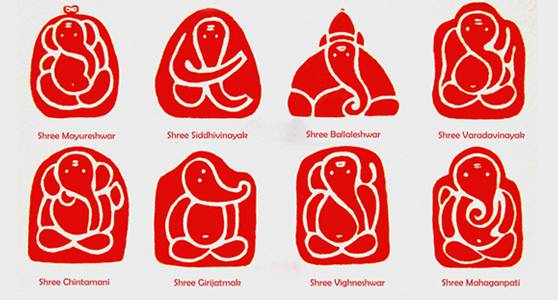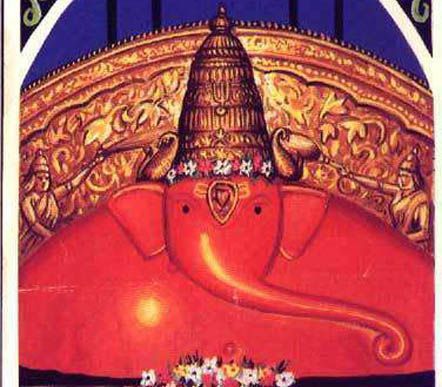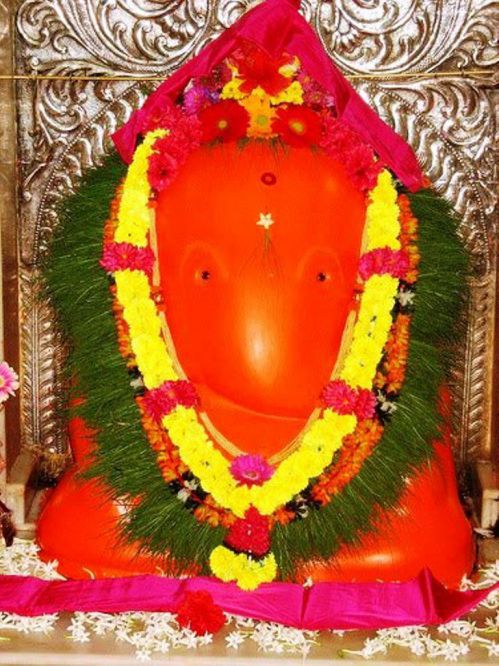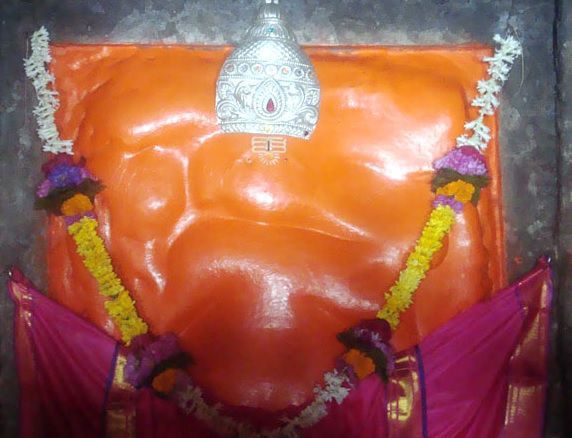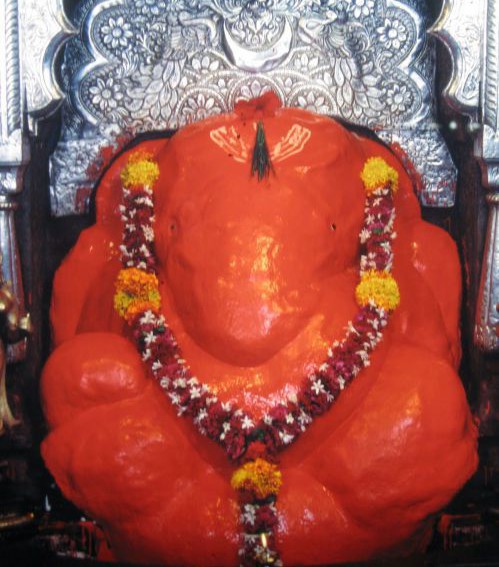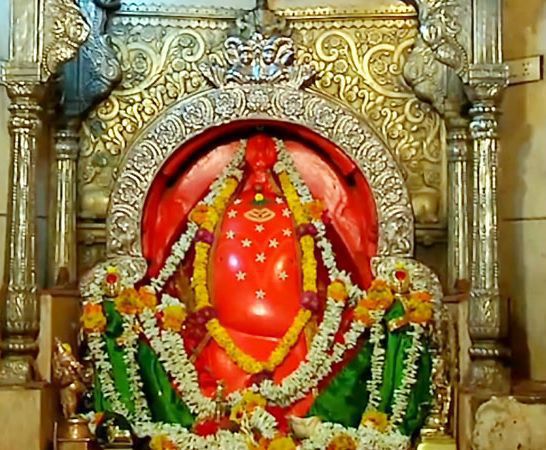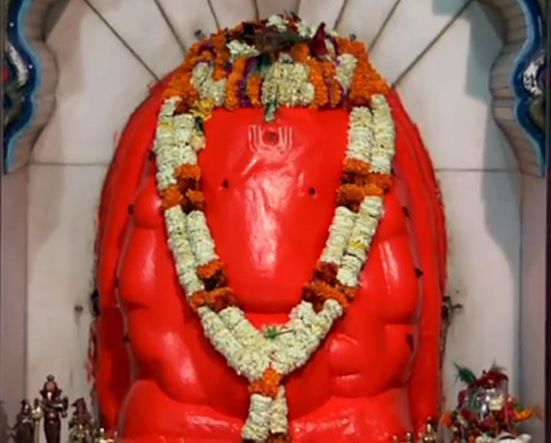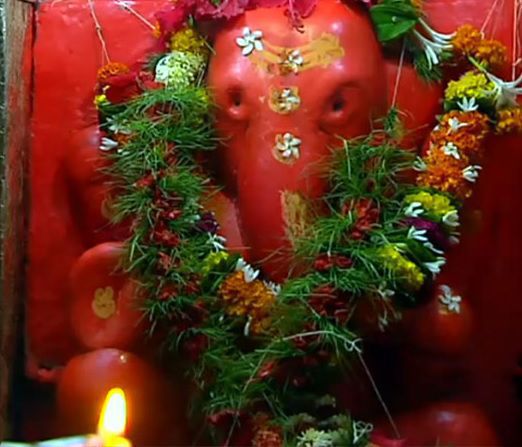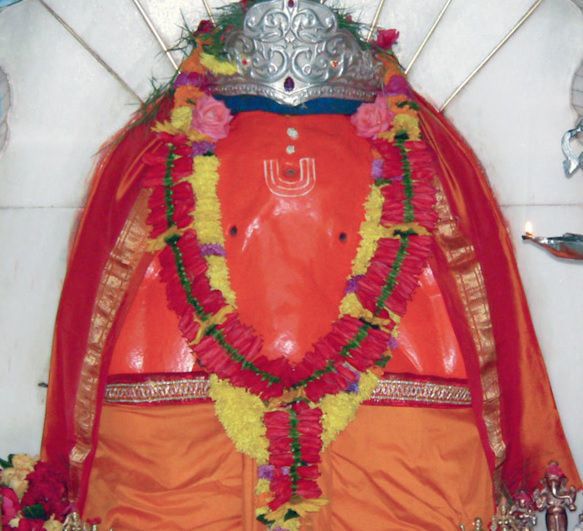No products in the cart.
Ashtavinayak – Hindu Gods and Deities
Ashtavinayaka Temples refer to the eight Shrines of Lord Ganesha situated in Maharashtra state of India. The Ashtavinayaka Yatra is the pilgrimage covering these eight holy abodes of Ganesha in and around Pune District of Maharashtra. Out of these 8 Temples 6 are in Pune and 2 are in Raigad District.
Lord Ganesha the elephant faced God is usually worshiped first before any other worship service is carried out to any other deity. “Vinayaka” is another name of Lord Ganesh, the God loved and worshiped by every Hindu. Lord Ganesh is the protector of his devotees. Eight effigies found among the nature, sculptured by nature have been housed in the temples created ages ago at the places where the effigies were first identified. These ‘Swayambhu’ effigies, now the sacred idols, are the famous “Ashta Vinayak.”
Ashtavinayaka literally means “eight Ganeshas” in Sanskrit. Everybody should visit the Ashtavinayak in Maharashtra at least once in a life time. There are eight temples dedicated to Ganesha, in Maharashtra related to various episodes from the puranas and other legends. According to Shastra, first you have to visit Moreshwar of Moregaon. Then visit Siddhatek, Pali, Mahad, Theur, Lenyandri, Ozar, Ranjangaon and then again Moregaon.
Given below is the details and short description of these temples:
This Ballaleshwar temple is the only temple of Ganesh, famous by the name of his devotee. The temple is located in Pali, off the Mumbai-Pune highway, about 11 km before Nagothane on Mumbai-Goa highway.
Ganesha is believed to have saved this boy-devotee, Ballala, who was beaten by local villagers and his father (Kalyani-seth) for his single-minded devotion to him.
The temple is constructed in such a way that after the winter (dakshinayan : southward movement of the sun) solstice, the sun rays fall on the Ganesha murti at sunrise. The temple is built with stones which are stuck together very tight using melted lead.
Like a few other murtis, this one has diamonds embedded in the eyes and navel, and with His trunk pointing to the left.
One speciality of this temple is that the prasad offered to this Ganapati at Pali is Besan Laadu instead of Modak that is normally offered to other Ganapatis.
The shape of the idol itself bears a striking semblance with the mountain which forms the backdrop of this temple. This is more prominently felt if one views the photograph of the mountain and then sees the idol.
Ganesh as Chintamani is a god who brings peace of mind & drives away all the perplexities of the mind. Here the idol of Ganesha has a left trunk with carbuncle and diamonds as its eyes. The idol faces the East side.
Ganesha is believed to have got back the precious Chinatamani jewel from the greedy Guna for sage Kapila at this spot. However, after bringing back the jewel, sage Kapila put it in Vinayaka’s (Ganesha’s) neck. Thus the name Chintamani Vinayak. This happened under the Kadamb tree, therefore Theur is known as Kadambanagar in old times.
The temple is located 22 km from Pune, off the Pune-Solapur highway, and is hence the nearest from Pune. The village of Theur sits at the confluence of three major regional rivers—Mula, Mutha & Bhima.
Girijatmaj Vinayak refers to the Ganesh as the son of Parvati. This is the only Ashtavinayaka temple that is build on a mountain and is set in a Buddhist cave temple.
It is believed that Parvati (Shiva’s wife) performed penance to beget Ganesha at this point. Girija’s (Parvati’s) Atmaj (son) is Girijatmaj. This temple stands amidst a cave complex of 18 caves of Buddhist origin. This temple is the 8th cave. These are called Ganesh-leni as well.
The idol faces north with its trunk to the left, and has to be worshiped from the rear of the temple. The temple faces south. This idol seems to be little different from the rest of the Ashtavinayak idols in a sense that it appears to be not very well designed or carved like the other idols. This idol can be worshiped by anyone. There is no electric bulb in the temple. The temple is constructed such that during the day it is always lighted up by the sun-rays!
The Mahaganapati at Ranjangoan is one of the most powerful representations of Lord Ganesh. Here Shiva is believed to have worshipped Ganesha before fighting the demon Tripurasura. It is the eighth and last Ganesh Temple to be visited during the Ashta Vinayaka Temple Pilgrimage.
The idol faces the east, is seated in a cross-legged position with a broad forehead, with its trunk pointing to the left. It is said that the original idol is hidden in the basement, having 10 trunks and 20 hands and is called Mahotkat, however, the temple authorities deny existence of any such idol.
Mahaganapati is portrayed, seated on a lotus, flanked by his consorts Siddhi and Ridhi. The temple dates back to the period of Peshwa Madhav Rao.
The temple of Maha Ganpati is very close to the centre of the town Ranjangaon. The temple was erected during the rule of the Peshwas. Peshwa Madhavrao had constructed the inner sanctum, to house the swayambhoo (naturally found) idol.
The Mahaganapati Temple, Ranjangaon is east facing and has a huge and beautiful entrance gate. The Idols of Jay and Vijay are present near the gateway. The temple is constructed in such a manner that the rays of the sun fall directly on the idol.
Shri Moreshwar or Mayureshwar Temple is situated at a distance of 55 km from Pune, next to the Karha River in the Morgaon village in the Baramati Taluka of Pune district in Maharashtra. This region is also known as the Bhuswananda. Moregaon Village is said to have received its name as once upon a time the shape of this place was like a peacock and there was an abundance of peacock birds in this region. Literally Moregoan means ‘Village of Peacocks’ and is a combination of two words (more which means Peacock and goan which means village). As per the legend Lord Ganesh riding a peacock in the form of Mayureshwara slew the demon Sindhu in response to pleas from the Gods. This is the first Temple to be visited during the Ashtavinayaka Temple Pilgrimage.
It is the most important of all the eight Ashtavinayak temples and has four gates. This idol has its trunk turned to the left and a cobra poised over it to protect it.
The Idol of Lord Ganesha, riding a peacock, in the form of Mayureshwara is believed to have slain the demon Sindhu at this spot. The idol, with its trunk turned to the left, has a cobra (Nagaraja) poised over it protecting it. This form of Ganesha also has two other murtis of Siddhi (Capability) and Riddhi (Intelligence).
However, this is not the original Idol -which is said to have been consecrated twice by Brahma, once before and once after being destroyed by the asura Sindhurasur. The original murti, smaller in size and made of atoms of sand, iron, and diamonds, was supposedly enclosed in a copper sheet by the Pandavas and placed behind the one that is currently worshiped.
Siddhivinayaka, Siddhtek
It is believed that it was here on the Siddhtek Mountain, that Vishnu acquired Siddhi. The temple is situated off the Pune-Solapur highway about 48 km from the town of Srigonda in Ahmadnagar district. The temple is located just next to Bhima River.
God Vishnu is supposed to have vanquished the asuras Madhu and Kaitabh after propitiating Ganesha here. This is the only murti of these eight with the trunk positioned to the right.
It is believed that the two saints Shri Morya Gosavi and Shri Narayan Maharaj of Kedgaon received their enlightenment here.
The temple is North-facing and is on a small hillock. The main road towards the temple was believed to be built by Peshwa’s general Haripant Phadake. The inner sanctum, 15 feet high and 10 feet wide is built by Punyashloka Ahilyabai Holkar. The idol is 3feet tall and 2.5feet wide. The idol faces North-direction. The stomach of the murti is not wide, but Riddhi and Siddhi murtis are sitting on one thigh. This murti’s trunk is turning to the right. The right-sided-trunk Ganesha is supposed to be very strict for the devotees. To make one round (pradakshina) around the temple one has to make the round trip of the hillock. This takes about 30 minutes with moderate speed.
Ganesh as Varad Vinayak fulfills all the dreams and desires plus grants all the boons. This temple is located three kilometers off the Pune-Mumbai highway near Khopoli (80 km from Pune) and is thus closest to Mumbai city.
The handsome Prince Rukmangad refused sage Vachaknavi’s wife Mukunda’s illicit call, and was cursed to suffer from leprosy. Mukunda was satisfied by Indra who deceived her as Rukmangad and she bore a child by name Grutsamad. When Grutsamad came to know about the real story he cursed his mother Mukunda to become the tree of Bori and she in turn cursed him to bore a demon son named Tripurasur, the one who was defeated by Shiva after praying the Ranjangaon Ganesha. Grutsamad after getting cursed went to the forest of Pushpak and worshipped Ganesha. Sage Grutsamad is famous for the mantra GaNanaN Tva. He founded the temple and called this Ganesha: Varada Vinayak.
The idol faces the east, has its trunk to the left and has been in the constant company of an oil lamp – said to be burning continuously since 1892. There are 4 elephant idols on 4 sides of the temple. The hall is 8feet by 8feet. The dome is 25feet high and is golden at the top. The dome has designs of cobra.
This is the only temple where devotees are allowed to personally pay their homage and respects to the idol. They are allowed in the immediate vicinity of this idol to perform their prayers.
Lord Ganesha at Ozhar is known as Vigneshwara or the remover of all obstacles which he achieved by vanquishing the demon Vighnasura.
The history encompassing this idol states that Vighnasur, a demon was created by the King of Gods, Indra to destroy the prayer organized by King Abhinandan. However, the demon went a step further and destroyed all vedic, religious acts and to answer the people’s prayers for protection, Ganesh defeated him. The story goes on to say that on being conquered, the demon begged and pleaded with Ganesha to show a mercy. Ganesha then granted in his plea, but on the condition that demon should not go to the place where Ganesha worshipping is going on. In return the demon asked a favour that his name should be taken before Ganesha’s name, thus the name of Ganesha became Vighnahar or Vighneshwar (Vighna in Sanskrit means a sudden interruption in the ongoing work due to some unforeseen, unwarranted event or cause). The Ganesha here is called Shri Vighneshwar Vinayak.
The temple faces east and is surrounded by a thick stone wall. One can walk on the wall. The main hall of the temple is 20 feet long and the inner hall is 10 feet long. This idol, facing the east, has its trunk towards the left and rubies in its eyes. There is a diamond on the forehead and some jewel in the navel. Idols of Riddhi and Siddhi are placed on the two sides of the Ganesha idol.


